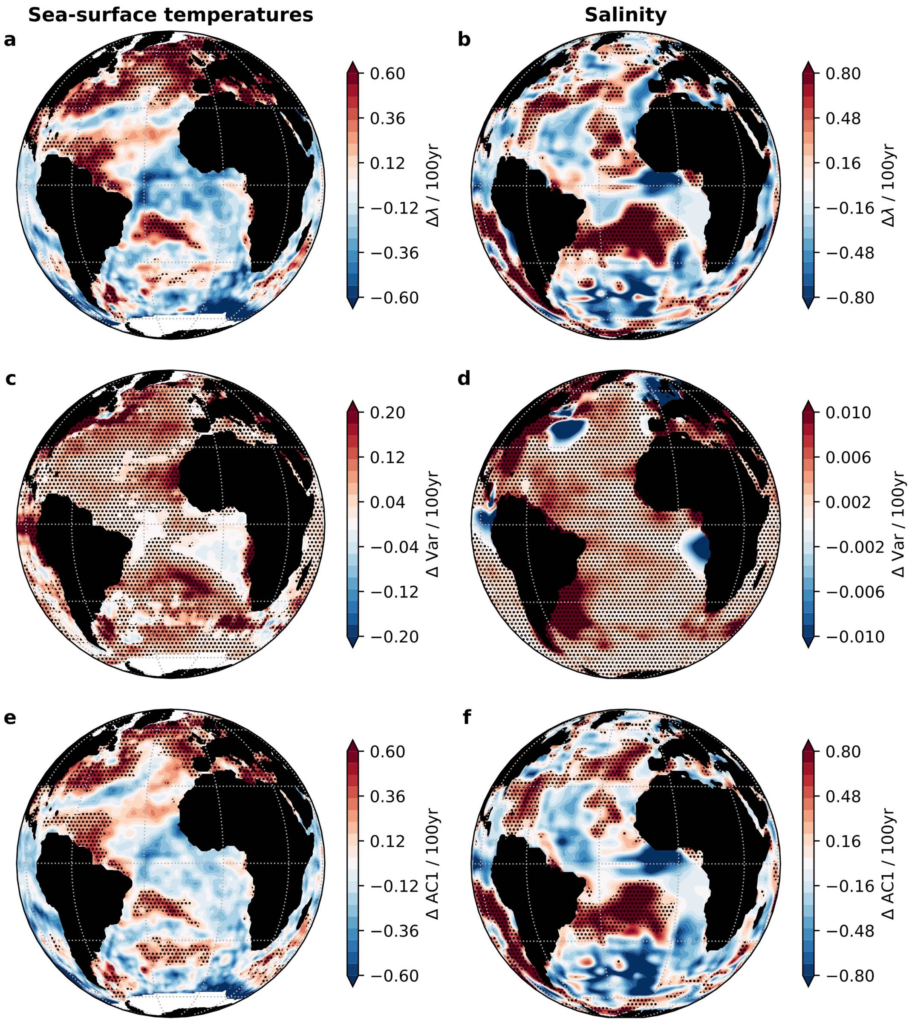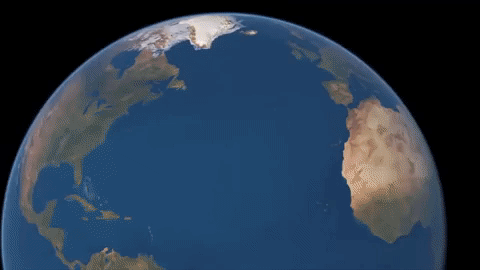Gulf Stream could be veering toward irreversible decline, a new analysis warns – Atlantic current “approaching a critical threshold beyond which the circulation system could collapse”

By Ben Turner
6 August 2021
(LiveScience) – One of the most crucial ocean current systems for regulating the Northern Hemisphere’s climate could be on the verge of total collapse due to climate change, a new study has revealed.
The Atlantic Meridional Overturning Circulation (AMOC), which includes the Gulf Stream and is responsible for moderating large parts of the world’s climate, has undergone “an almost complete loss of stability over the last century”, according to a new analysis. The currents work like a conveyor belt to transport warm, salty water northward from the tropics and cold water back south along the seafloor. This giant conveyor belt had already been shown to be at its weakest in more than a thousand years, but now it could be veering toward a total breakdown.
Such a collapse would have a disastrous impact on global weather systems, leading to sea-level rises in the Atlantic; greater cooling and more powerful storms across the Northern Hemisphere; and severe disruption to the rain that billions of people rely upon to grow crops in Africa, South America and India, according to the U.K.’s meteorological office.
The study author believes that this transition could occur rapidly after the ocean current system is driven beyond a critical tipping point.
“The findings support the assessment that the AMOC decline is not just a fluctuation or a linear response to increasing temperatures but likely means the approaching of a critical threshold beyond which the circulation system could collapse,” author Niklas Boers, a researcher at the Potsdam Institute for Climate Impact Research in Germany, said in a statement.

Data taken from past analyses of Atlantic ice cores and other geological records show that the AMOC can exist in two stable states: a stronger, faster state that humans rely upon today and another that is much slower and weaker. According to Boers, the existence of the two states implies that “abrupt transitions between the two circulation modes are in principle possible.”
This means that the current as we know it could weaken until it reaches a tipping point, flipping from the stronger state to the weaker one. This will rapidly transform climates across the Northern Hemisphere to be much less temperate than they are right now. […]
The critical threshold after which the collapse occurs could be reached much sooner than scientists first thought, according to Boers.
“I wouldn’t have expected that the excessive amounts of freshwater added in the course of the last century would already produce such a response in the overturning circulation,” Boers said in the statement. “We urgently need to reconcile our models with the presented observational evidence to assess how far from or how close to its critical threshold the AMOC really is.” [more]
Gulf Stream could be veering toward irreversible collapse, a new analysis warns
Observation-based early-warning signals for a collapse of the Atlantic Meridional Overturning Circulation
ABSTRACT: The Atlantic Meridional Overturning Circulation (AMOC), a major ocean current system transporting warm surface waters toward the northern Atlantic, has been suggested to exhibit two distinct modes of operation. A collapse from the currently attained strong to the weak mode would have severe impacts on the global climate system and further multi-stable Earth system components. Observations and recently suggested fingerprints of AMOC variability indicate a gradual weakening during the last decades, but estimates of the critical transition point remain uncertain. Here, a robust and general early-warning indicator for forthcoming critical transitions is introduced. Significant early-warning signals are found in eight independent AMOC indices, based on observational sea-surface temperature and salinity data from across the Atlantic Ocean basin. These results reveal spatially consistent empirical evidence that, in the course of the last century, the AMOC may have evolved from relatively stable conditions to a point close to a critical transition.


